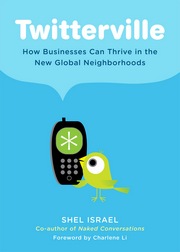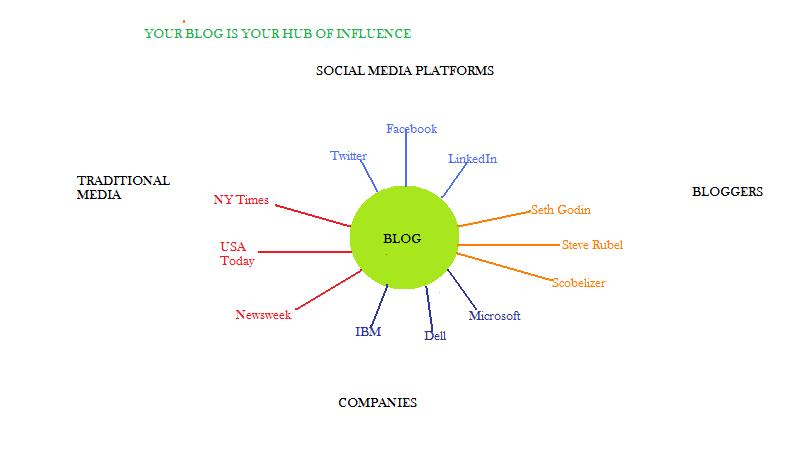What a great read! — Twitterville by Shel Israel
 This is likely to be a “Labor of Love” i.e., chatting with you about all the cool things I learned from this very personal, highly researched, inspirational Social Media MUST READ.
This is likely to be a “Labor of Love” i.e., chatting with you about all the cool things I learned from this very personal, highly researched, inspirational Social Media MUST READ.
A friend just told me that her secret to reading loads of books is to look at the beginning, the end, and then bits in the middle. But, PLEASE, if you want to try that method, don’t start with Twitterville:
This is one book with loads of answers — none of which you will want to miss
In Twitterville, you are what you Tweet & 10 other things I’m going to remember:
1.Twitterville is a global communication community where conversations have power; but its environment is “homey” with a small town feel.
2. In good times and bad, companies can get closer to their customers with ease and at low cost. Twitter is a nonstop “feedback loop.”
3. Twitter is a golden moment in massive micromarketing — less mass, more personal . . . ushering us from the Broadcast Age to the Conversation Era.
4. [From the final chapter, but a key point you shouldn’t miss]: The better our communication tools get, the less likely we will be to use tools of destruction. Countries that do business together don’t go to war against each other; therefore Twitter is likely to be an instrument for peace.
5. When you’re getting started on Twitter, you may want to lurk for a bit: this allows you to listen and watch to get a sense of the mechanics and rhythm of the conversations. Listening on Twitter will make you smarter.
6. If a tree falls in a forest, and it’s not on Twitter, did it make a sound?
7. Lethal generosity: the greatest influence goes to the most generous:
“If you join a community where a competitor exists, or is free to join and you give more to that community than the competitor, the other player is forced either to follow you or to abstain from participating in a place where customers spend time.”
8. Metcalfe’s Law: The power of the computer network grows exponentially as the number of nodes increases.
9. Followers have influence: they are “Feet on the Street.”
10. What Twitter does better than any other tool: Spreading the word with great speed.
Case studies: Companies large & small have “gotten it”
Zappos: Tony Hsieh discovered he could stay closer with people who mattered to him on Twitter than he had been doing via email, phone or other social media platforms.
Comcast: Frank Eliason made it clear he was on Twitter to solve customer problems.
Henry Ford Hospital in Detroit: Doctors have humanized surgery by “live-tweeting” during operations.
IBM: More than 1,000 IBM employees are now active Tweeters. Management is delighted: Twitter saves time, brings employees and customers together, and makes the company collectively smarter.
This has been just a “taste”
Shel Israel has chapters on personal branding, journalism, nonprofits, the dark side of Twitter, and the very basic Get Started Steps and Vocabulary.
What are you doing still reading this review? Go out and get the book and then get Tweeting.
FURTHER READING:
Twitter workshop cheat sheet



 OK, I’m not David Letterman or Johnny Carson, but I think I might be able to come up with my own
OK, I’m not David Letterman or Johnny Carson, but I think I might be able to come up with my own  Lots of people considering social media strategies for business and personal reasons [like job seeking] may not fully appreciate the value of blogging.
Lots of people considering social media strategies for business and personal reasons [like job seeking] may not fully appreciate the value of blogging.







